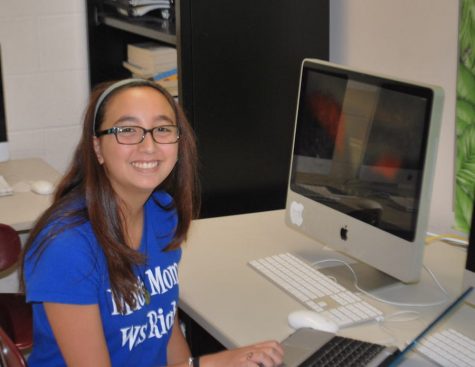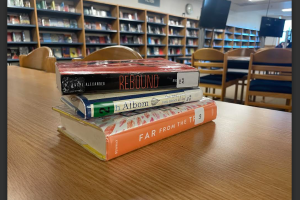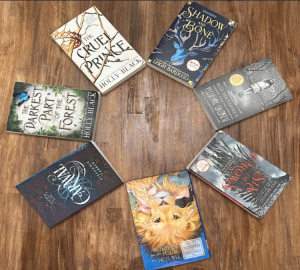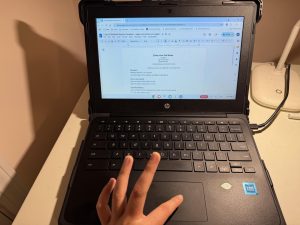Woman of the Month: The Girl Who Ran
https://live.staticflickr.com/1443/25923470494_8e9df8a370_b.jpg
Gibb taking a much deserved rest after completing the Boston Marathon.
October 1, 2020
When you google “the first woman to run the Boston Marathon,” the name Kathrine Switzer pops up. Across the Internet, Switzer is remembered for the iconic video of her being attacked by marathon officials, and for the changes that were enacted following the altercation. But Switzer was not the first woman to run the Boston Marathon. That title goes to Roberta “Bobbi” Gibb.
Growing up in 1950’s Cambridge, MA, Gibb was an active child, competing in field hockey, basketball, and volleyball. She trained by running through the woods with her dog, but Gibb never saw herself as a distance runner. Even if Gibb had wanted to run competitively, she would have been unable to join her school’s cross-country or track teams. Because health experts believed “long-distance running was hazardous to women’s reproductive health,” (“Roberta Louise Gibb”) women were prohibited from competing in events longer than 800 meters (“Finally honoring Bobbi Gibb, the first woman to run the Boston Marathon”).
In 1962, Gibb attended Tufts University School of Special Studies, in Boston. There, she met William Bingay, a member of the cross-country team. When the pair began dating, Gibb was inspired to take up distance running. At first, she struggled to keep up with Bingay, but over time, her stamina and strength improved and she was able to run farther and for longer. It was not long before she began commuting the eight miles from her home to the city on foot, running.
After watching the Boston Marathon in April 1965, Gibb was determined to master the 26.2 miles it took to complete a marathon. With women’s running shoes unavailable, she ran in nurses’ shoes, gradually increasing her stamina. By that Fall, she was able to run sixty-five miles in a single run. After she married Bingay and moved with him to California, Gibb continued to train for Boston (“Roberta Louise Gibb”).
In 1923, British runner Violet Percy officially completed a marathon without medical consequences, negating the claims about the effects of running on women’s health. Nevertheless, the U.S. Amateur Athletic Union (AAU), the organization which oversaw amateur sporting events in America, refused to permit women to competitively run long-distance (“Roberta Louise Gibb”). With the Boston Athletic Association (BAA), the sponsor for the Boston Marathon, subject to the policies of the AAU, women were prohibited from participating in the Marathon. Gibb was notified of this policy when she attempted to register for the 1966 Boston Marathon, but she wouldn’t let that stop her. Writing in her autobiography To Boston with Love: “I’d heard that the Marathon was open to every person in the world. It had never crossed my mind to consider myself different from the other runners. My outrage turned to humor as I thought how many preconceived prejudices would crumble when I trotted right along for twenty-six miles. . . . I believed that once people knew women could run marathon distances, the field would naturally open up” (“Roberta Louise Gibb”).
To register for the Boston Marathon, runners are required to meet a designated time standard in another marathon. There is a tradition, however, of unregistered runners taking on the course. They are known as “bandits.” Gibb decided that if she couldn’t register for the marathon, she would run as a bandit.
Patriots Day 1966, Gibb dressed in a sweatshirt to conceal her gender and hid in bushes near the start. As the runners passed, she jumped out and joined them. She was greeted with enthusiasm by the men running with her, with various remarking how they wished the women in their lives shared their passion for running. As Gibb warmed up, she refused to remove her sweatshirt, for fear of revealing her gender. When her fellow runners assured her that they would prevent her from being removed from the course, Gibb “removed the sweatshirt to reveal her long blonde pony-tail, black bathing suit, and baggy Bermuda shorts” (“Roberta Louise Gibb”).
Word quickly spread through the crowd, and thousands waited for the chance to catch a glimpse of the first woman to run the Boston Marathon. Diana Walsh, a ‘66 Wellesley graduate, was among them, describing in the Wellesley College Newspaper her and her peers’ reaction to seeing Gibb:
“We scanned face after face in breathless anticipation until just ahead of her, through the excited crowd, a ripple of recognition shot through the lines, and we cheered as we never had before. We let out a roar that day, sensing that this woman had done more than just break the gender barrier in a famous race” (“First woman to have run Boston Marathon speaks to Wellesley students”).
Gibb was buoyed by the support of the crowd and fellow runners, maintaining her pace until she reached “Heartbreak Hill.” On top exhaustion and dehydration, her shoes — ones that were for boys due to women’s running shoes being unavailable — and the blisters they inflicted took their toll on her stride. She divulged in To Boston with Love how “[her] pace dropped off. [She] set each foot down as if on tacks.” With three miles left, Gibb pushed through the pain. Her determination paid off when she finished in three hours and 21 minutes, “ranking in the top third” (“Roberta Louise Gibb”). At the finish line, she was met with cheers, excited reporters, and a handshake from John Volpe, the Massachusetts Governor at the time. Despite this positive attention, she was prevented from engaging in the celebratory post-race dinner, and William Cloney, the BAA race director, attempted to invalidate Gibb’s achievement, denying her participation in the Marathon, only acknowledging that she ran the route.
Gibb was unperturbed by this rejection and for the next two years, she ran the race as a bandit, ranking as the “unofficial women’s winner” (“Roberta Louise Gibb”). In 1967, her win was overshadowed by Kathrine Switzer. Switzer had successfully registered using her initials K. Switzer, but Cloney and race official Jock Semple had attempted to physically eject her from the race. The altercation was caught on film, and the ensuing attention it garnered led to Switzer being labeled the first woman to run the Boston Marathon, despite Gibb having completed the course the year prior. In 2011, Switzer was inducted into the National Women’s Hall of Fame for her impact on women’s sports (“Kathrine Switzer”).
In spite of both Gibb and Switzer’s efforts, it was not until 1972 that the AAU amended their rules and the BAA permitted women to register for the Marathon. Twenty-four years later, on the 100th anniversary of the Boston Marathon, and 30 years after Gibb’s historic race, she returned to Boston to join the ranks of the women who sported official race numbers, and she finally received a winner’s medal.
Today, the 26.2 Foundation is raising funds to erect a sculpture of Gibb on the Marathon course. To learn more about this project or to donate, click this link: “The Girl Who Ran”
It is difficult to imagine that over 50 years ago, women were prohibited from participating in sports such as cross-country or track-and-field, unable to engage in marathons or the Olympics. Bobbi Gibb had been running long-distance her entire life, there was nothing except a sexist rule preventing her from succeeding. When she first attended the Boston Marathon as a spectator, she resolved to one day run the course. Gibb refused to allow the pseudoscience surrounding women’s reproductive health to prevent her from running. In running the race, she paved the way for women like Kathrine Switzer, Stephanie Bruce, Aliphine Tuliamuk and Joan Benoit, and she inspires young women across the nation to achieve their dreams. Whether or not the world wants them to. Gibb herself admits that as she was running, “[she] knew that [she] was running for much more than [her] own personal challenge. [She] was running to change the way people think. There existed a false belief that was keeping half the world’s population from experiencing all of life” (“First woman to have run Boston Marathon speaks to Wellesley students”).
Whether it is women runners or young girls dreaming of the future, Roberta Gibb empowered women to reach for their dreams, to never allow gender, or someone else’s view of it, to stop them.








